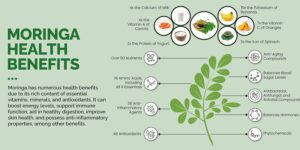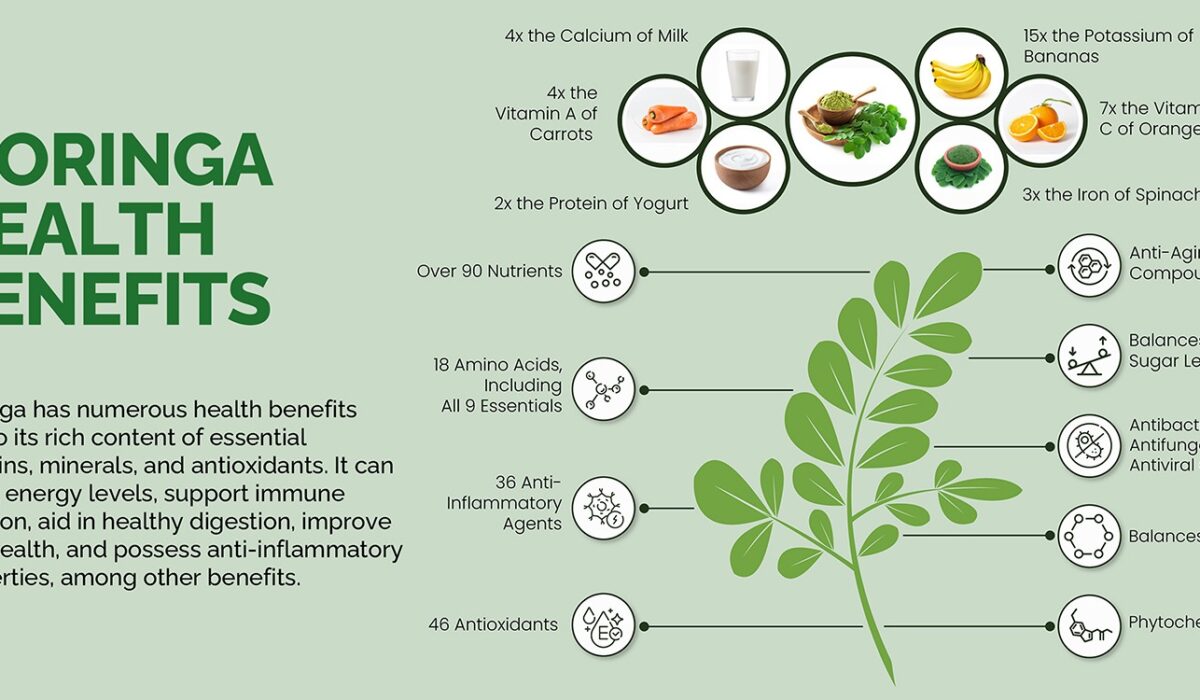Moringa vs Sea Moss
Moringa and sea moss are both highly nutritious and medicinal plants that have been used for centuries in traditional medicine. Both plants have been found to have a wide range of health benefits and are commonly used as supplements to help boost overall health and well-being. However, there are also some key differences between the two plants, which are important to understand in order to determine which one may be the best fit for your needs.
Benefits of Moringa
Moringa, also known as the “miracle tree,” is a tropical plant that is native to parts of Africa and Asia. The leaves, pods, seeds, and roots of the moringa plant are all edible and are rich in a variety of nutrients, including vitamins A, B, and C, as well as minerals such as calcium and potassium. Moringa is also high in antioxidants and anti-inflammatory compounds, which can help to reduce the risk of chronic diseases such as heart disease and cancer.
One of the most notable benefits of moringa is its ability to improve overall nutrition. Moringa leaves are particularly high in protein and are often used as a source of vegan protein. Moringa is also a good source of iron, which can help to prevent anemia. Additionally, moringa is high in vitamin A, which is essential for maintaining healthy vision and skin.

How to Consume Moringa
One of the most popular ways to consume moringa is through moringa powder. Moringa powder is made by drying and grinding the leaves of the moringa tree into a fine powder. This powder can be added to a variety of dishes, such as soups, stews, or sauces, to boost their nutritional content. Moringa powder can also be added to smoothies or juice to make a healthy and nutritious drink.
Another way to consume moringa is by making tea out of the leaves. To make moringa tea, simply steep a handful of moringa leaves in hot water for 5-10 minutes. The tea can be consumed plain or with honey or lemon to taste.
Moringa leaves can also be eaten raw or cooked. They have a slightly bitter taste and can be added to salad. Or used as a green leafy vegetable in dishes such as curries and stews. They can also be sautéed with other greens or used as a garnish.
Benefits of Sea Moss
Sea moss, also known as Irish moss, is a type of seaweed that is native to the Atlantic coast of Europe and North America. Like moringa, sea moss is rich in a variety of nutrients. Including vitamins A, B, and C, as well as minerals such as calcium and potassium. Sea moss is also high in iodine, which is important for maintaining healthy thyroid function. Additionally, sea moss is a good source of antioxidants and anti-inflammatory compounds. These can help to reduce the risk of chronic diseases such as heart disease and cancer.
One of the most notable benefits of sea moss is its ability to support the immune system. Sea moss is high in zinc, which is essential for maintaining a healthy immune system. Additionally, sea moss is a good source of vitamin C, which is important for preventing infections. Sea moss is also known to have anti-inflammatory properties, which can help to reduce inflammation throughout the body.
How to Consume Sea Moss
One of the most popular ways to consume sea moss is through sea moss gel. To make sea moss gel, the dried sea moss is soaked in water for several hours or overnight to rehydrate it. Then it is blended into a smooth gel-like consistency. The gel can be added to smoothies, juice, or even used as a thickener in recipes like soups and stews. The gel can also be consumed plain.
Another way to consume sea moss is by making tea out of the dried sea moss. To make sea moss tea, simply steep a small amount of dried sea moss in hot water for 5-10 minutes. The tea can be consumed plain or with honey or lemon to taste.
Another key difference between moringa and sea moss is the way in which they are used. The leaf of moringa is often consumed as a tea or powder, while sea moss is typically consumed in the form of a gel. Moringa leaves can also be eaten raw or cooked, but sea moss is typically not consumed in this way.
In terms of dosage, it’s generally recommended to consume around 2-3 grams of moringa powder per day, while sea moss gel dosage can vary depending on the desired use, but on average it’s around 1-2 tablespoons per day.
In summary
Moringa and Sea Moss are both highly nutritious and medicinal plants that have been used for centuries in traditional medicine. Both plants have a wide range of health benefits and can be used as supplements to help boost overall health and well-being. Moringa is particularly rich in protein and vitamin A, while Sea moss is rich in iodine and can support the immune system. The key difference between the two is the way in which they are used, Moringa leaves are often consumed as a tea or powder, while sea moss is typically consumed in the form of a gel. It’s important to consult with a healthcare professional before taking these supplements, especially if you have any underlying health conditions or are pregnant or breastfeeding.
Moringa With Barry stores offer a variety of moringa products. These include: Moringa Powder, Moringa Tea, Moringa Capsules and Moringa Oil.
Read More:
Moringa vs. Wheatgrass: Comparing the Nutritional Powerhouses
Moringa vs. Spirulina: Unveiling the Benefits of Green Superfoods
Moringa vs. Chlorophyll: Exploring the Green Nutrient Powerhouses
Moringa vs. Maca: Examining the Health Benefits and Uses
Moringa vs. Ashwagandha: Exploring the Benefits of Two Powerful Adaptogens
Moringa Powder Benefits: Explore The Benefits Of Moringa Powder
How to Grow a Moringa Tree: Learn The Best Ways to Grow Moringa Tree





1 Comment